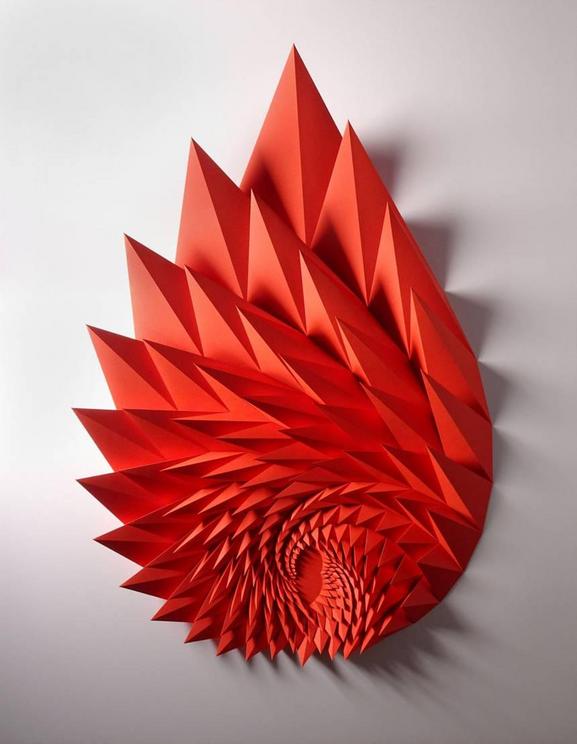'Paper engineer' folds experimental works merging science & art
Paper is an incredibly versatile thing: we can write on it, build with it, and even make stunning, thought-provoking art with it. Taking flat sheets of paper and transforming them into three-dimensional wonders is American artist and self-described "paper engineer" Matthew Shlian, who folds paper into vibrant, geometric, 3D surfaces that explore the overlaps between science, math art, architecture and engineering. Here's a video of Shlian speaking about his collaborative research efforts at the National Academy of Sciences, working with scientists on folding things at the micro- and nano-scales.

Before beginning to fold paper professionally, Shlian actually started out going to school for ceramics and print media. But instead of doing traditional ceramics or prints, Shlian would create large digital prints, then cut and score them in order to create large pop-up works. Shlian didn't have a particular aim in mind, but wanted to make his pieces interactive and to impart something about space and geometry. Finally, one of his faculty advisers gave him a pop-up book, which he dissected in order to understand how it worked, which eventually led him to the practice of folding paper.



Shlian then found himself at the University of Michigan in Ann Arbor, and began reaching out to different departments to see if he could do some cross-disciplinary collaborations. He soon found himself working with various scientists on a wide range of projects, from flexible photovoltaics, to self-assembling materials and growing carbon nanotubes.


Shlian's work has evolved over the years, shifting from stark, white pieces to now colourfully painted paperscapes. Shlian explains his creative process, his motivations and what happens when things go wrong:
My process is extremely varied from piece to piece. Often I start without a clear goal in mind, working within a series of limitations. For example on one piece I'll only use curved folds, or make my lines this length or that angle etc. Other times I begin with an idea for movement and try to achieve that shape or form somehow. Along the way something usually goes wrong and a mistake becomes more interesting than the original idea and I work with that instead. I'd say my starting point is curiosity; I have to make the work in order to understand it. If I can completely visualize my final result I have no reason to make it -- I need to be surprised.



Shlian's sources of inspiration range from Islamic tiling patterns, architecture, biomimetics and music, to more practical concerns like how proteins might misfold and lead to diseases like Parkinson's. It's all about exploring the unknown and drawing out new and unexpected possibilities, as he explains:
This research into visualization of pattern is intriguing. It questions the micro-macro patterning of nature, the structures we find on the nano-scale and directly compares it to architecture and ornamentation. I use these structures as the basis for my artwork. These patterns come from both a study of Islamic tile design, and an exploration into nano-forms. It's the artist's job to bridge the gaps to make the invisible visible, and see things in a new light.


Video can be accessed at source link below.

